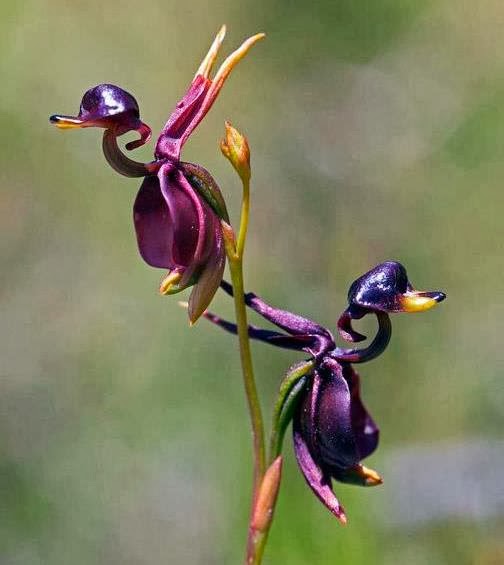 |
| The bee orchid |
The bee orchids - Ophrys species, are one of natures most amazing mimics. First mentioned in the book "Natural History" by Pliny the Elder (23-79 AD), Ophrys species are a large group of ground orchids which inhabit a huge range that stretches from the central to South Europe, North Africa, and Asia Minor, up to the Caucasus Mountains. Although they clearly at home around the Mediterranean, for those of us who live in the colder climates of the United Kingdom there is at least one species - Ophrys apifera that can be found inhabiting dry, chalk and limestone grasslands throughout the southern and central regions.
 |
| Bee orchid |
Incredibly, it is not just the shape of the Bee Orchid flower that is used to attract its pollinator bee, these highly complex plants also use sexual deception! This is achieved by producing the sex pheromone of virgin female pollinators. This stimulate mating behaviour in the male pollinators, which then attempt to mate with the flower, as process known as 'pseudocopulation'.
During pseudocopulation, pollen from the flower becomes attached to part of the bee, usually the head or abdomen. The bee then inadvertently carries and transfers this pollen to other flowers where once again they are enticed into pseudocopulation. It is at this stage that pollination is successfully completed.
 |
| Bee orchids |
In late summer/autumn a rosette of leaves will emerge above ground and serves to allow the plant to grow a new tuber. This will matures until the following spring, and take the place of the old tuber which will slowly die back and disappear. Come the following spring the flowering stem will be produced.
As a point of interest, the botanical name Ophrys come from the Greek word for "eyebrow". This refers to the furry edges of the lips of several species.
All orchids are protected under CITES II and should not be removed or disturbed in habitat.
For related articles click onto the following links:
CHARLES DARWIN'S FAVOURITE ORCHID - Catasetum species
How to Grow Monkey face Orchids from Seed - A Warning!
HOW TO GROW THE HYACINTH ORCHID - Bletilla striata
HOW TO FEED ORCHIDS
HOW TO REPOT AN ORCHID
HOW TO WATER ORCHIDS
MONKEY FACE ORCHIDS
SCHOMBURGKIA EXALTATA
THE ANGEL ORCHID
THE BEE ORCHIDS
THE BUTTERFLY ORCHID - Psychopsis papilio
THE FLYING DUCK ORCHID
THE VAMPIRE ORCHID - Catasetum macrocarpum
WHAT IS AN ORCHID?
















































